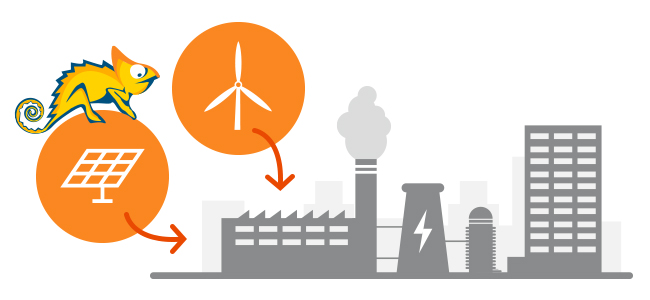Traditionally, load management has focused on keeping energy consumption constant and on avoiding peak loads. However, this concept needs to be rethought in today’s world, characterized by the increasing integration of renewable energy sources such as solar and wind power. These energy sources are known for their volatility, forcing companies to adapt their consumption strategies.

Through precise demand forecasting and active load management, constant load curves can be achieved, and companies can benefit from significant cost reductions and tax advantages. Optimizing purchasing conditions on the electricity exchange is an additional means of reducing costs. WiriTec’s energy data management software can support you here.
Analysis and forecasting: the cornerstones of active load management
The first step towards effective load management is a precise analysis of the energy requirements of the assets and the capacities of the existing energy generators. This first step determines which assets can be switched off or on, in what order, with what priority and for how long. By using historical data and defined input variables, the dependencies between production and consumption are defined in order to later have a solid basis for calculating load schedules based on production planning. WiriTec’s energy data monitoring solution enables companies to create detailed forecasts that take into account not only the availability of energy sources, but also the expected demand.
More flexibility and fast response times with WiriTec C
Flexibility is of paramount importance in order to be able to react to volatile energy supplies. WiriTec C allows companies to dynamically adapt their energy consumption for switchable processes to the availability of generated green energy. To do this, both the total consumption of the site and the relevant energy consumers and generators must be measured continuously and on a small scale. The forecast electricity consumption is calculated on the basis of the collected values, current data on the switchable consumers and the planned and forecast data. As soon as active switching on and off is required, automated switching commands are transmitted to the machine control system, which then takes over the switching. Once the switching command has been sent, the status of the consumer and the measured values of the associated metering devices are monitored to ensure success.
Advantages of modern load management
Active load management not only offers the opportunity to reduce energy costs, but also contributes to a more stable and reliable energy supply. In addition, companies can benefit from fluctuations in spot market energy prices and at the same time achieve more optimal purchasing conditions and additional tax advantages with constant load profiles.
Are you interested in active load management? Then contact us today and together we will find a solution for your application.